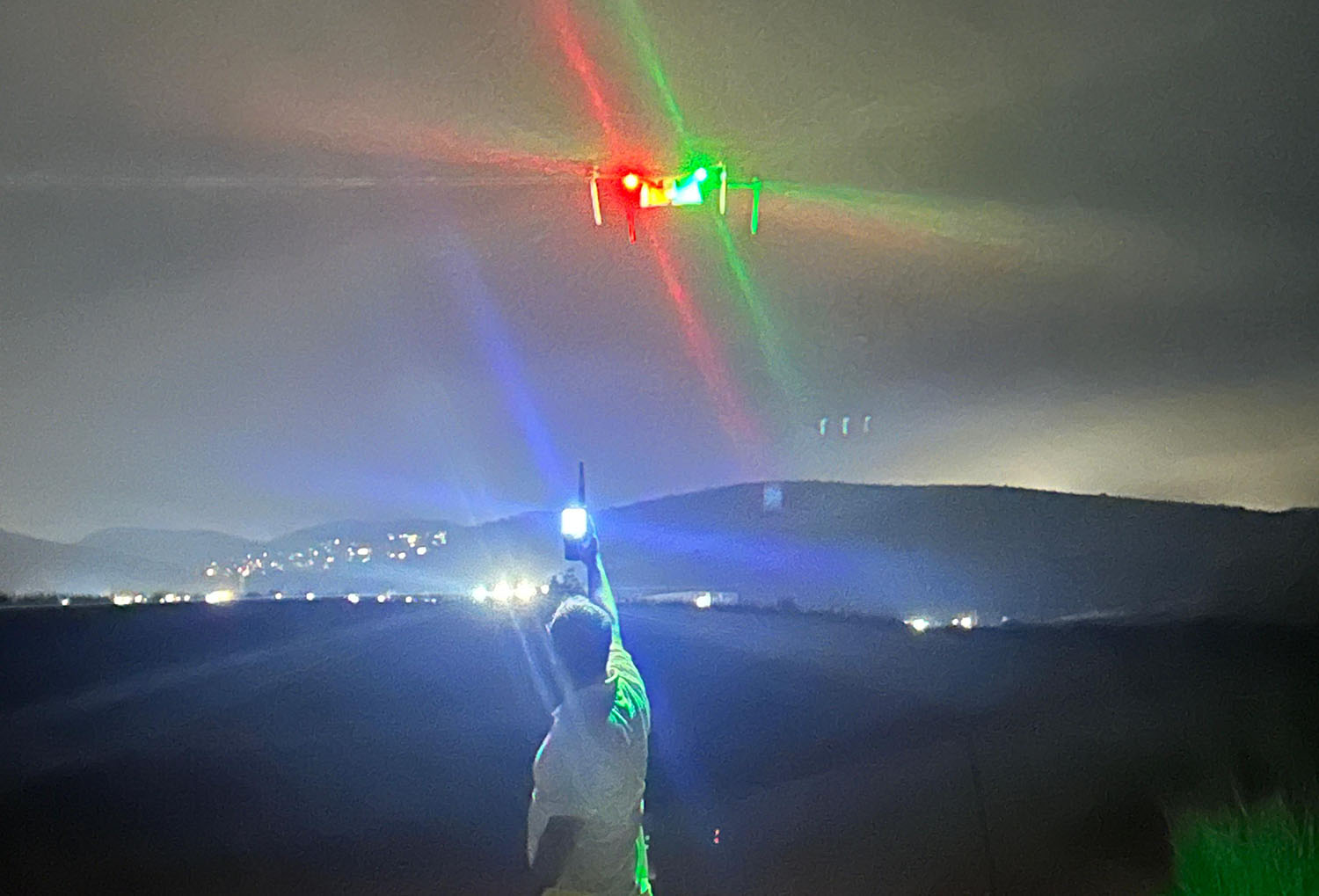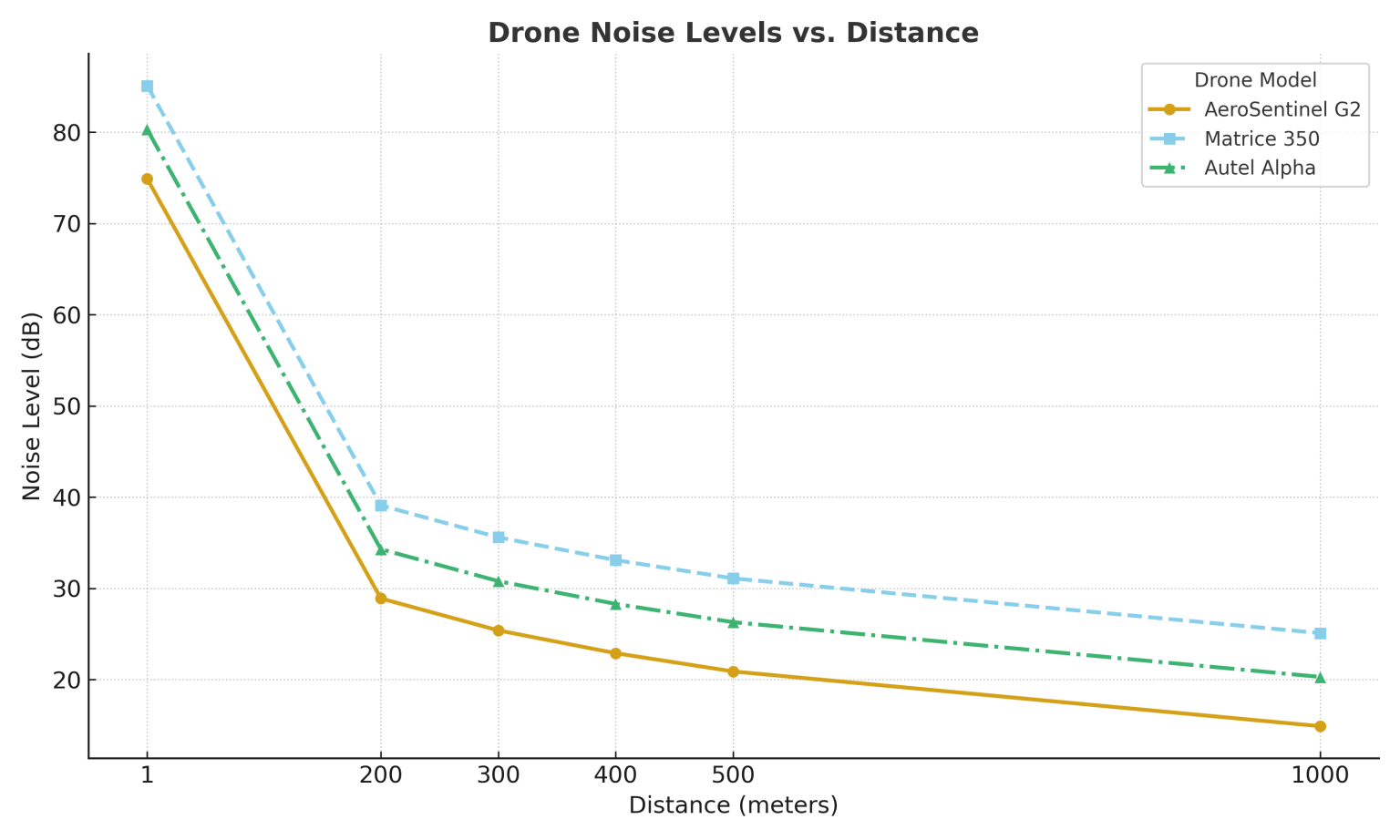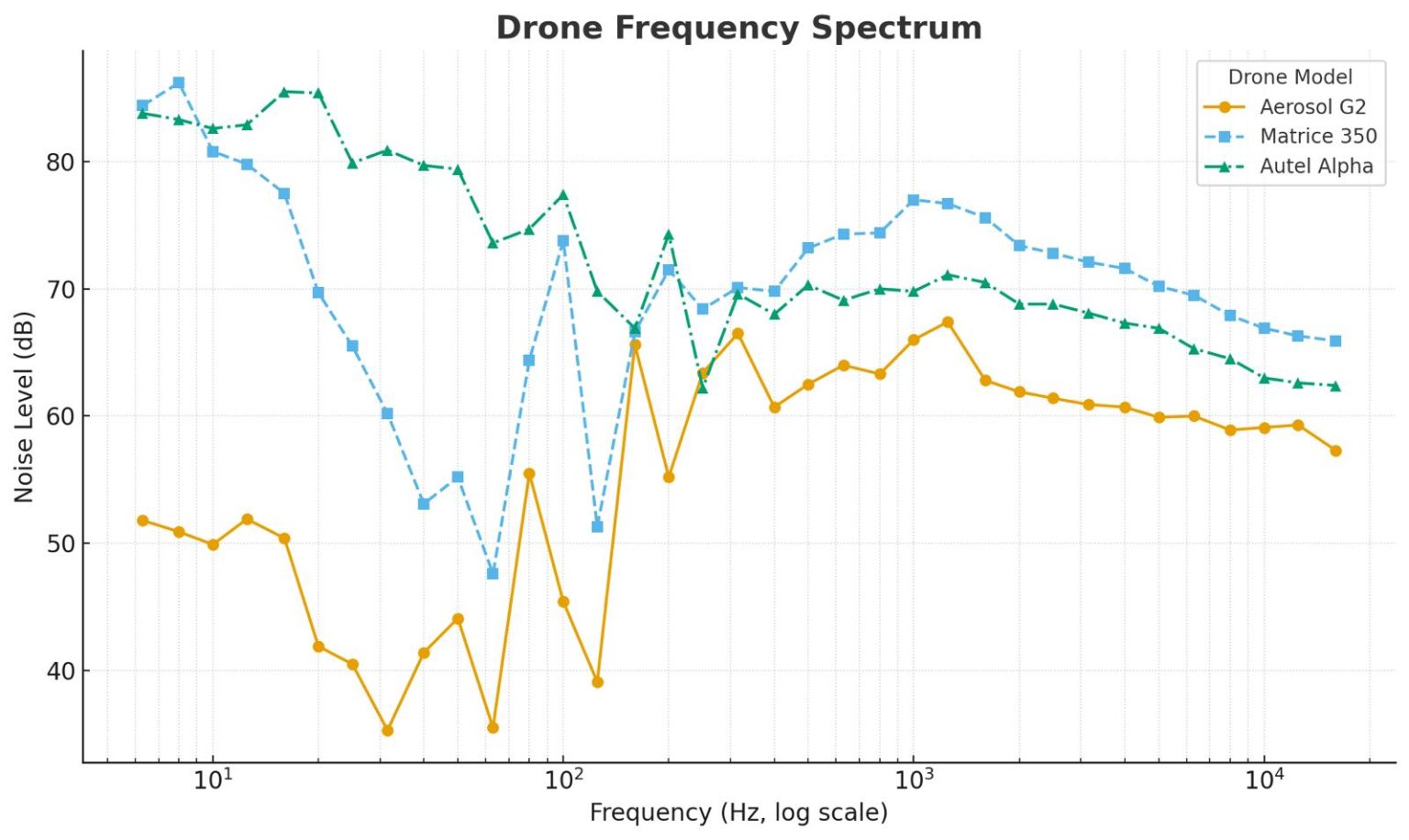Defining Covert Excellence in Tactical Drones
At AeroSentinel, every drone in our tactical fleet is engineered with one mission in mind: covert performance. In the field, the sound a UAV makes can be the difference between success and failure. While commercial drones are designed for general or industrial use, AeroSentinel’s platforms are built to stay undetected – quiet, stable, and reliable in even the most demanding environments.
To validate this capability, we conducted an independent acoustic test using the AeroSentinel G2 as a representative model. The results confirmed what our teams already knew: AeroSentinel drones operate with a significantly lower noise profile, setting a new benchmark for tactical silence.

Built for Stealth, Proven by Data
To put AeroSentinel’s acoustic design philosophy into measurable terms, the G2 was tested alongside two well-known commercial drones: the DJI Matrice 350 and the Autel Alpha. The independent test, conducted by an ISO-certified lab, measured sound levels at multiple distances and altitudes.
Across every test point, the G2 consistently produced 10 to 15 decibels less noise than the other models – a difference that translates to being up to three times quieter to the human ear. This result doesn’t just highlight one model’s performance; it reinforces AeroSentinel’s commitment to engineering silence across its entire fleet.

Silence That Wins Missions
The data tells a clear story: silence isn’t just a feature – it’s an advantage. In tactical operations, even a few decibels can mean the difference between detection and success. The G2’s low acoustic footprint allows operators to fly closer to the target area with reduced risk of exposure, especially in low-light or populated environments where ambient noise is minimal.
Beyond stealth, quieter operation also improves communication clarity between team members and minimizes interference with onboard sensors and microphones – a subtle but powerful benefit for ISR and reconnaissance missions. The result is a drone that not only performs quietly, but operates more efficiently under real-world field conditions.

Technical Insights
The G2’s acoustic advantage is not accidental – it’s engineered. The independent frequency spectra show the G2’s levels sit lower across the bands most audible to humans (roughly 250-1250 Hz), which is where rotor and blade harmonics tend to be most noticeable. That quieter signature comes from three design decisions working together: optimized propeller geometry, tuned motor RPM ranges to avoid strong harmonic peaks, and careful airframe damping to reduce structural noise. The lab results (measured at multiple distances and corroborated by calculated far-field decay) confirm those design choices translate to real-world reductions in sound pressure – typically 10–15 dB lower at operational standoffs.

From Lab Results to Field Reality
Lower numbers on a chart convert directly into tactical advantages. A quieter drone:
Reduces detection risk. Smaller acoustic footprint means operators can observe for longer or approach targets more closely without alerting nearby personnel.
Improves mission flexibility. Quieter platforms integrate better with ground teams, allowing closer coordination and safer handoffs in low-noise environments.
Enhances sensor performance. Reduced self-noise lowers interference for onboard audio and acoustic sensors, and reduces microphone masking when capturing ambient sounds.
Minimizes community disturbance. For operations near civilian areas, a lower noise profile reduces complaints and simplifies compliance with local regulations.
Together, these benefits make the G2 (and by extension AeroSentinel’s design approach) more than just a quieter aircraft – they make it a more effective tactical tool.
Quick Takeaways
ndependent testing confirmed that the AeroSentinel G2 operates far quieter than leading commercial drones such as the Matrice 350 and Autel Alpha. With a 10+ dB advantage at standard surveillance ranges, the G2 offers unmatched acoustic stealth-making it ideal for covert missions where silence equals safety and success.
Appendix: Noise Test Methodology and References
Testing Facility:
Galit Acoustic Engineering Ltd., an ISO-certified acoustic laboratory (ISO 9001:2015, ISO 14001:2015).
Tested Product:
AeroSentinel G2 drone compared with DJI Matrice 350 and Autel Alpha.
Test Objective:
Measurement and comparison of drone acoustic signatures under controlled outdoor conditions.
Test Date:
28 September 2025
Time Frame:
20:00 – 21:30
Location:
Ra’anana, Israel
Equipment Used:
- NTI Audio XL2: Noise measurement device (Serial No. A2A-18420-E0)
- NTI Audio MA220: Microphone (Serial No. 7168)
- Quest Technologies QC-10: Calibrator (Serial No. QIG040107)
- NTI Audio Data Explorer: Measurement analysis software
- Tripod and wind breaker (calibrated, valid until 15 April 2027)
Measured Distances and Altitudes:
1/1 m, 20/20 m, 40/20 m, 40/40 m, 60/40 m, 60/60 m, 80/60 m, 80/80 m
Lead Engineer:
Uri Lurie, Galit Acoustic Engineering
Summary Reference:
Full noise level data and frequency spectra are documented under report No. 1625100502 by Galit Acoustic Engineering Ltd.
Data Transparency
All data presented in this post are based on certified third-party measurements conducted by Galit Acoustic Engineering Ltd. (Report No. 1625100502) and are published here with permission for informational purposes.





